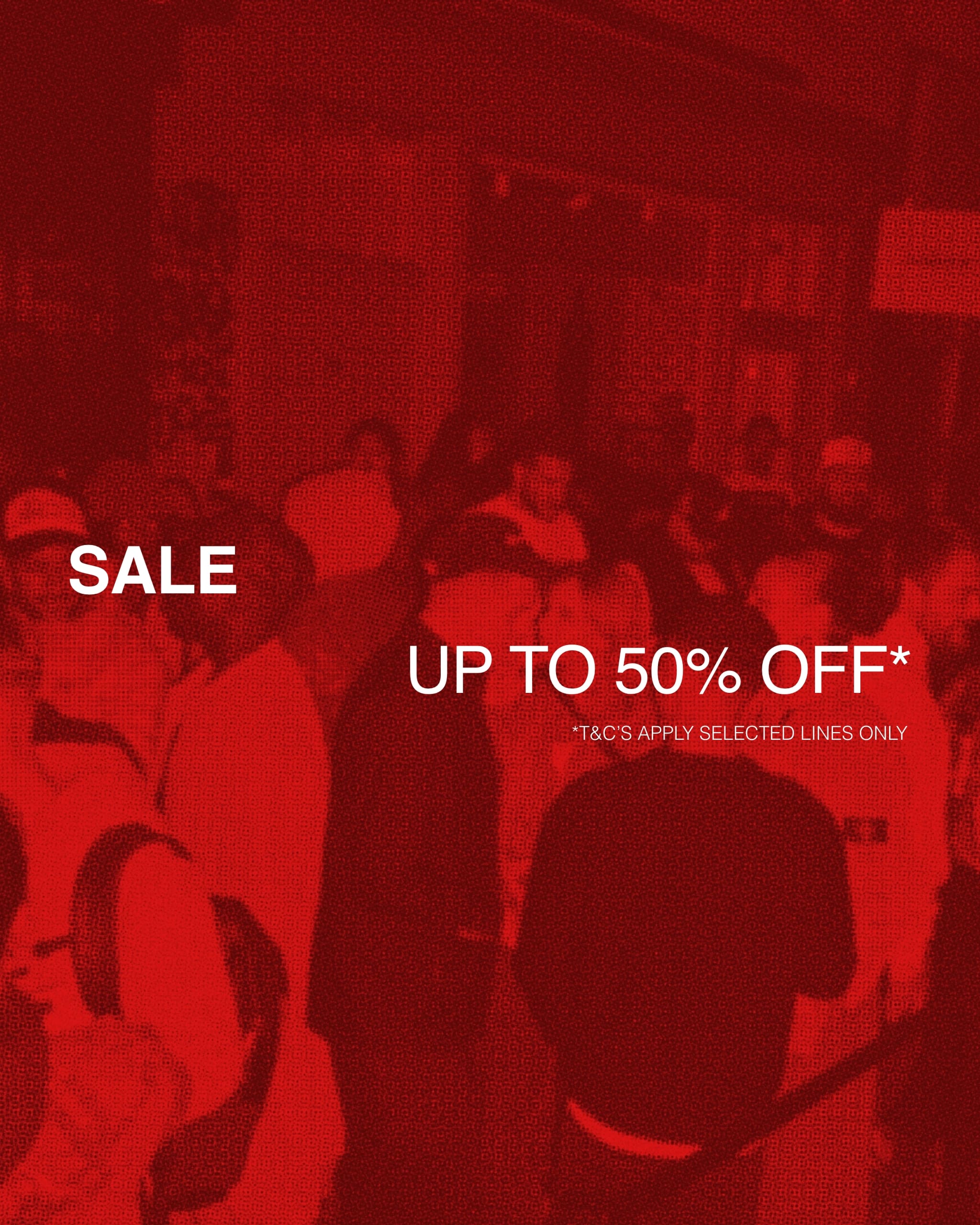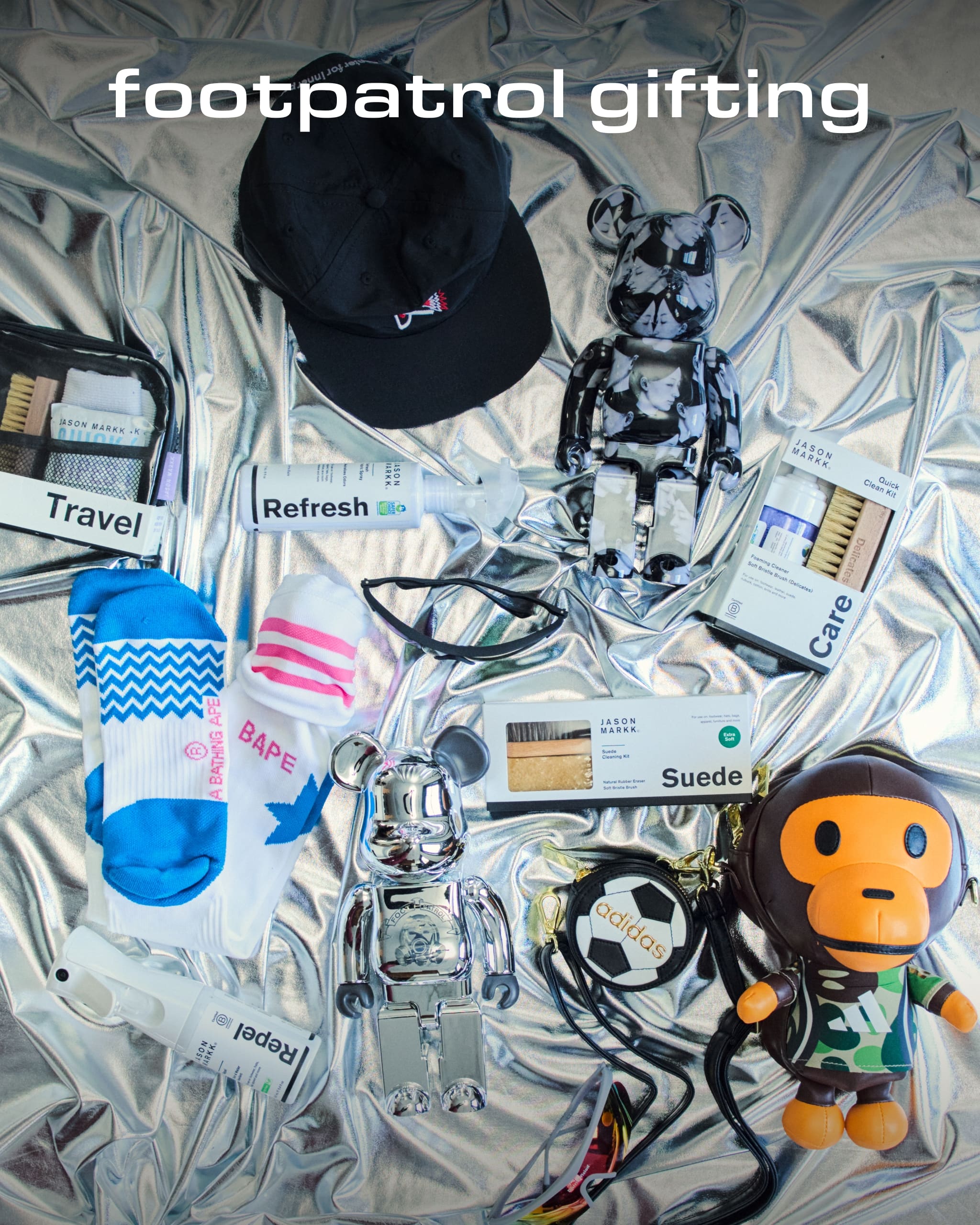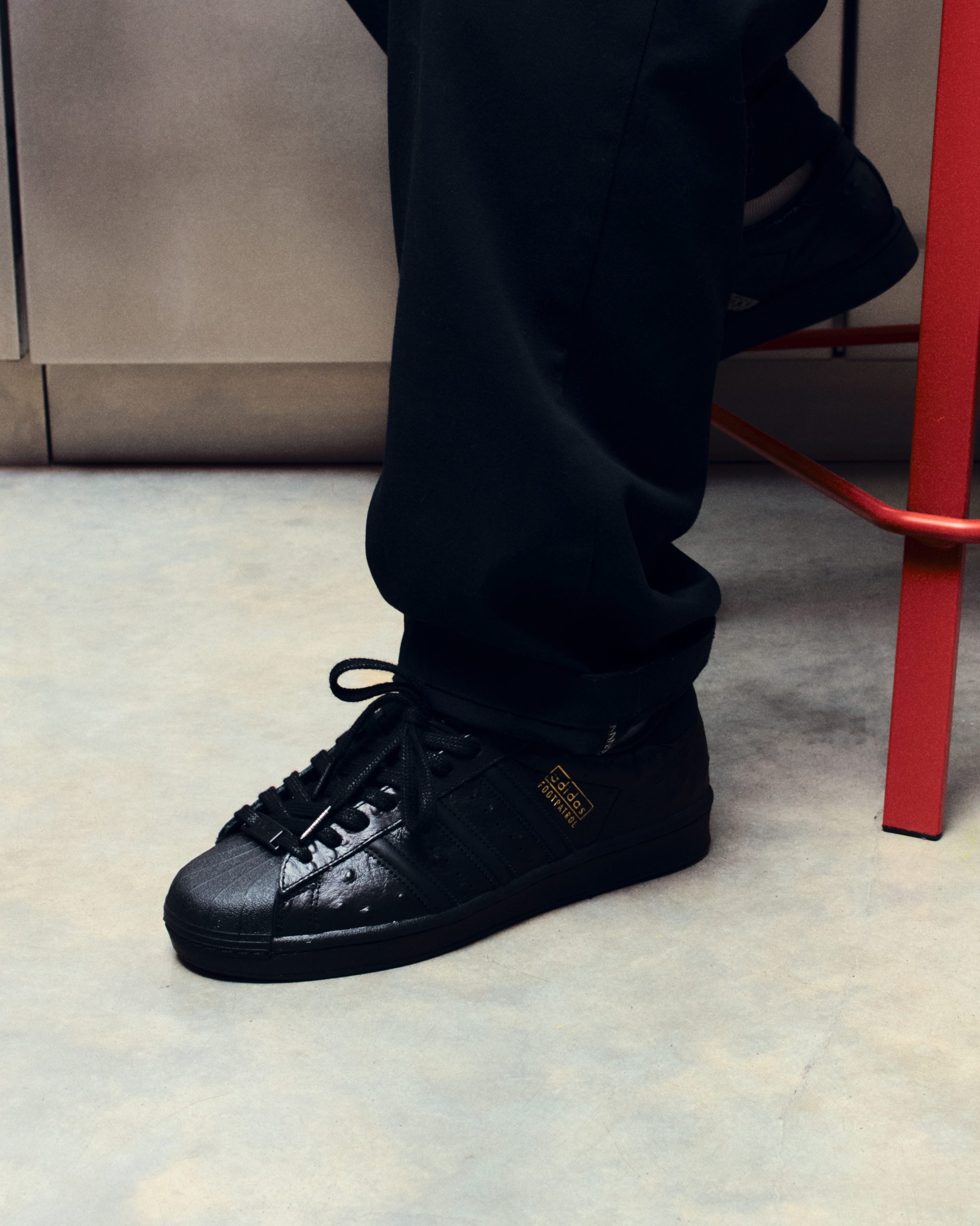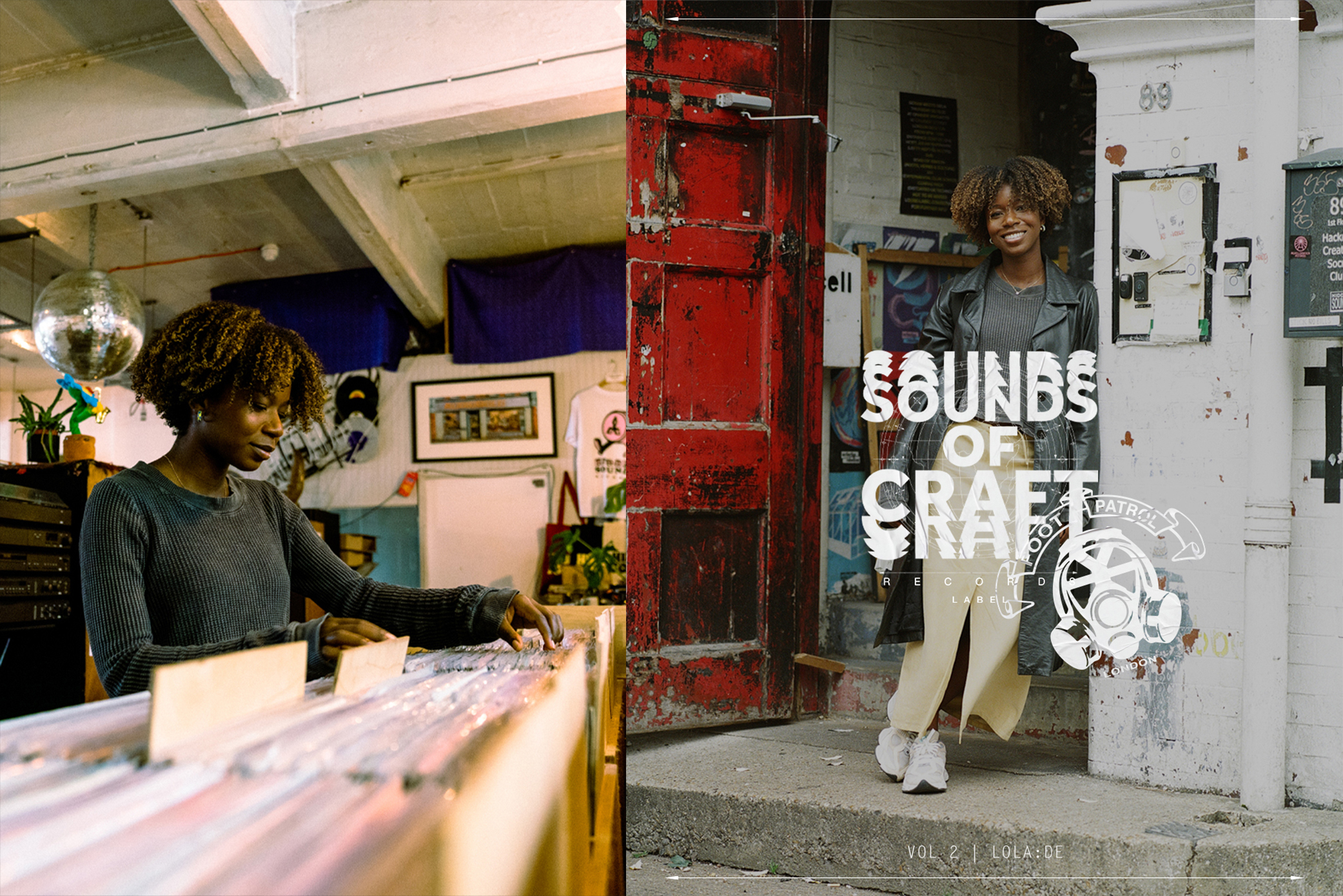Author: Bradley Martinez
Born in Finland, Karhu are nowhere near finished! Built on quality and attention to detail, these are just a couple of reasons why this Finnish brand are loved worldwide.
With the upcoming cooler months, Karhu look towards their proud outdoor legacy with the introduction of the Fusion XC. With that retro runner aesthetic absolutely nailed down, they opt for a more modern functionality that’s been inspired by several models throughout their archive including the ’96 Fusion AP.
Going back to those words of ‘attention to detail’, the outsole is an updated and remained version of their signature T-Profile lug pattern for complete traction and stability. Built with HydroGuard, a breathable, waterproof membrane that’s been designed to keep your feet warm, and dry the Fusion XC arrives in a trio of outdoor inspired colour options that will help them slip into your winter rotation.
Shop the latest from Karhu in-store and online here.





HELEN KIRKUM X ASICS X FOOTPATROL LAUNCH SHOE TO MARK FOOTPATROL 20 YEAR ANNIVERSARY
HELEN KIRKUM is working with Asics for the second time as a continuation of the first Crafts for Minds project which launched in February 2022. This is a handmade in-house collaboration, in partnership with Footpatrol to mark their 20th anniversary with 20 exclusive, limited edition sneakers. Each pair is completely one-of-one and unique; as with all HELEN KIRKUM products, the bespoke nature of the sneakers is paramount and each pair has its own collaged pattern created from ASICS offcuts. The sneakers are crafted using 5 key ASICS silhouettes as a base; GEL-LYTE III, GEL-NANDI OG, GEL-PRELEUS, GEL-KAYANO 14 and the GEL-KAYANO 5 OG. Each of the deadstock pairs have been customised with a collaged ASICS logo; a key element of each pair.
Each pair will be raffled off, with the proceeds from the sales going to the charity Young Minds.
The patches are created from off cuts from HELEN KIRKUM and ASICS’ previous project – on the centre of the ASICS logo, customers can see the piece that was cut out from the previous collaboration, where the centre of the logo was cut away – a unique way to connect these projects together, and a thread that runs through these collections. The fragmented logo is split across each of the 20 pairs, so each pair shares pieces from the same sneaker. Also embedded within the design are off cuts from the Footpatrol one-of-one sneaker HELEN KIRKUM created for their 20 year Blueprint exhibition.
HELEN KIRKUM’s take on each iconic silhouette features a vibrant patchwork toe box framed with neon blanket stitch, fractured logos and limited edition embroidery details. 1 of 20 pairs created for the exclusive Garage Sale Launch, celebrating 20 years of Footpatrol. Each pair in the collection has its own unique collage of materials creating 20 distinctly individual pairs.





As you are all aware by now, Frequent Players is our music division within Footpatrol. Our way of exploring the world of music and bringing the community closer to those emerging within the scene.
For our latest Frequent Players feature, we’ve teamed up with Sons of Craft, a design lab who claim ‘craft is their religion’. They too have started to explore the world of music with thanks to their record label Sounds of Craft. This felt like the perfect opportunity to explore our two worlds and explore their world and their artists.
Next up, we speak with Lolade to learn more about her venturing into the world of music, smashing her first set and Glastonbury and of course, dropping Frequent Players our latest guest mix.
Footpatrol: Thank you so much for spending the time with us Lolade. We always like to kick things off with the nice easy question of, how are you?
Lolade: I’m doing great, thank you! The weather is lovely, autumn is my favourite season. I’ve been really busy lately which I quite like, but I’m looking forward to winding down at the end of the year.

FP: For our community members that haven’t had the pleasure of listening to your mixes. Could you give us an overview on how things started for you?
Lolade: Well, depends on how far back you want to go! When I was 10, I was abruptly sent to boarding school in Nigeria. I felt completely out of place there and when I moved back to London three years later, I felt even more out of place, like I didn’t quite fit in anywhere. As a result I spent a lot of my teens at home, immersed in mid 00s internet culture, mainly on MySpace where I was exposed to all sorts of music. Most of it was quite different from what I typically listen to now, but that period helped me form a very broad taste in music.
In my later teens I was listening to a lot of edm, not in nightclubs (at the time the only clubbing I knew of was trekking to Mayfair in high heels and tight dresses – decidedly not for me) but while doing cardio. I used to do body fitness competitions so I was constantly in the gym.
I somehow hadn’t crossed paths with more niche electronic subgenres until I made a friend in my early 20s who was obsessed with psy trance. Completely obsessed. He played Infected Mushroom all the time and I took a liking to it. Over time I started exploring more electronic music on my own, came across an amazing dj set on YouTube and completely fell in love. It felt like I had entered a new world and I was hooked. I was constantly listening to mixes and searching for music. I started going to local events, usually on my own at first as I didn’t know anyone else at the time who enjoyed this music. Eventually I made a lot of friends, some of whom were DJs who taught me the basics.
Fast forward a number of years – During the first lockdown in 2020 I started making public Spotify playlists, one of which gained a fair number of followers. Around summer 2021, I decided to finally start mixing all my favourite tracks together and bought myself a controller. I started sharing mixes on Soundcloud that winter and here we are now!
FP: Now we know you are big into hard house, trance and electronic. Where does the fascination stem from?
Lolade: I’ve always liked music that feels quite otherworldly. Even prior to getting really into electronic music, I’ve always been into musc like that. I love techno for this exact feel. Particularly deep, hypnotic techno.

There’s something deeply meditative and healing about dancing to good techno with a good crowd. A friend of mine compares it to the rituals of indigenous tribes dancing to the beat of a ceremonial drum, putting everyone in a trance-like state. I’m Nigerian (Yoruba) so in a more modern context this immediately reminds me of the live Fuji music the aunties and uncles would go wild for at the later hours of weddings and hall parties. My uncle is actually a Fuji artist, so perhaps my love for strong percussive kicks is in the blood!
That said, I don’t typically stick to one genre. Playing different genres that don’t throw off the energy or rhythm too much adds a fresh shot of colour and energy. I love the spacey vibe of trance and the tooly, old school sound of hard house.
FP: There are some insane venues all over the world that come to mind when I think of those genres. Has there ever been a place you’ve always wanted to do a set in?
Lolade: Corsica studios was one of the first clubs I went to for techno music. I remember the night perfectly – I had just moved to a new area, just gotten out of a relationship and was in a deep rut. One night, on a spur of the moment, I bought myself a ticket for a Discwoman event happening at Corsica Studios and went alone that night. I had such an incredible time and made lifelong friends that night. Playing there would feel like coming full circle!
FP: So we have come to meet at Hidden Sounds Record Store. What makes this your favorite spot above the rest?
Lolade: I spent a lot of time at Hidden Sounds when I first moved to the area and was looking around for places to spend my lazy weekend afternoons. It’s a gorgeous space and everyone there is super friendly. Their record selection is great too. Be sure to grab a coffee from Ursula!

FP: Congratulations on playing your first Glastonbury set this summer, could you tell us a little about that?
Lolade: Glastonbury was incredible! It was actually my first time going to Glastonbury and never in a million years did I expect to be playing there. I was watching Megan Thee Stallion perform and ran off halfway to do my set. It was quite far away from all the main action but it was a super fun set where I went for darker and heavier music than I would usually play. Everyone was super energetic and I loved that I had the freedom to play whatever I wanted. A really fun night!
FP: Lola:de, it has been such a pleasure to meet you. Before we let you go, we like to give all our interviewees the chance to sign off the interview with anything they’d like to share or a message of positivity. So by all means take it away!
Lola:De: Don’t be afraid of doing things alone 🙂



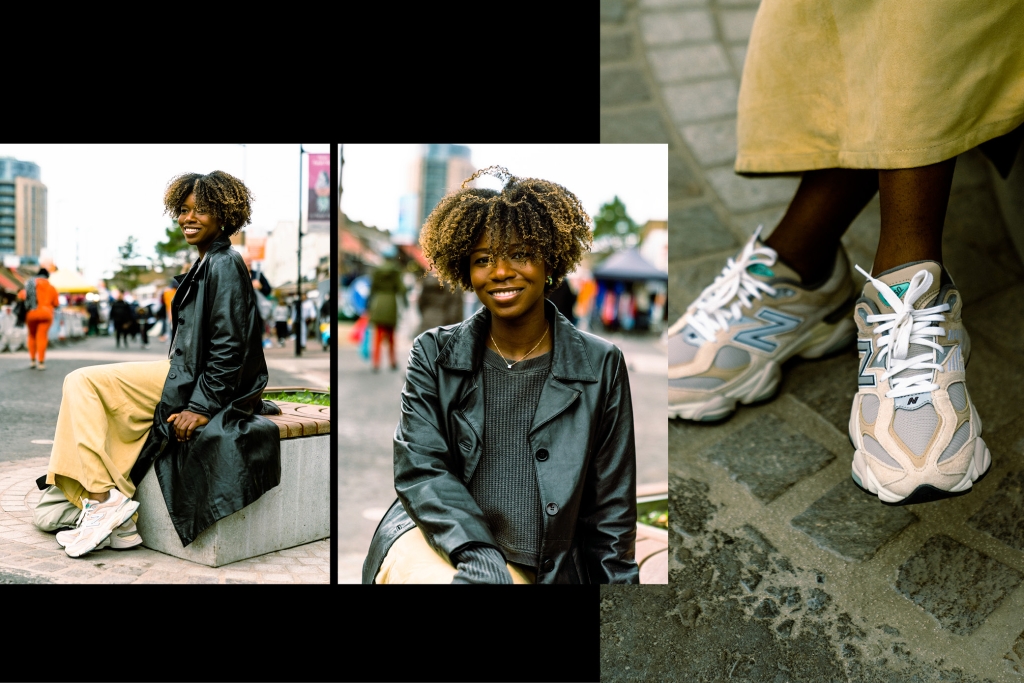
PLEASE TAKE TIME TO READ THE BELOW!
The London in-store draw is now CLOSED!
To enter, you’re required to sign up via the above forms, these WON’T be available in-store to sign up on.
In-store winners will be contacted via email informing them of their win. Within this email, winners will be given a set of dates in which they must collect their win from our London store. To collect, you will need to provide the winning email and a valid photographic government ID matching the winners name. NO ONE can collect on the winners behalf. Failure to provide this, or failure to collect within the given dates will mean failure to purchase your win.




PLEASE TAKE TIME TO READ THE BELOW!
The London in-store draw is now CLOSED
To enter, you’re required to sign up via the above forms, these WON’T be available in-store to sign up on.
In-store winners will be contacted via email informing them of their win. Within this email, winners will be given a set of dates in which they must collect their win from our London store. To collect, you will need to provide the winning email and a valid photographic government ID matching the winners name. NO ONE can collect on the winners behalf. Failure to provide this, or failure to collect within the given dates will mean failure to purchase your win.



Puma team up with Australian brand ‘Perks & Mini’ taking inspiration from the Brazilian Amazon with a BIO/VERSE theme. The collection has everything from apparel to footwear with tones of green, lavender, copper and purple each applying itself to the outdoors. P.A.M has remixed classic silhouettes to create unisex attire.

The BIO/VERSE theme merges the real-world environment with experimental designs transforming things such as Puma’s Nano rider into a hiking silhouette. With over 20 styles there’s various pieces each continuing the Brazilian Amazon vibe mixing urban sports wear technology and ecology, between nature and culture.






As you are all aware by now, Frequent Players is our music division within Footpatrol. Our way of exploring the world of music and bringing the community closer to those emerging within the scene.
For our latest Frequent Players feature, we’ve teamed up with Sons of Craft, a design lab who claim ‘craft is their religion’. They too have started to explore the world of music with thanks to their record label Sounds of Craft. This felt like the perfect opportunity to explore our two worlds and explore their world and their artists.
First up, we speak with Smokey.T to learn more about his connection with Sounds of Craft, his love of music and his first release, ‘Eclipse’.
Footpatrol: Mr. smokey.t! We have heard MANY good things about you from the team at Sounds of Craft! How are you?
Smokey.T: I’m all good thanks, been pretty busy lately as I’ve just moved house and have also been sorting out some exciting stuff with the guys at Sounds Of Craft.

FP: Let’s bring things right to the very beginning. Could you give the Footpatrol community a bit of insight into who you are?
Smokey.T: My names Teddy Chapple aka smokey.t and I’m a Music Producer & DJ based in London. I’ve always found it hard to pin down what music I make because I love playing all sorts of sounds. Whether it’s Breaks, Techno, Jungle or Hardcore I love it all. I’ve always been drawn to the underground, with its raw and gritty set up, there’s no nonsense.
FP: Where did the love of music start?
Smokey.T: My love for music started by jamming with my mates from a young age. Whether it was drums, guitar or piano I wanted to do it all. At school, music & drama were the only subjects that I was truly interested in, possibly because I didn’t need to write anything down! Growing up in a rural part of the countryside meant that I was largely detached from any form of an underground music scene.
I would discover new music from my brother who was living in London at the time and then spend hours searching for similar tracks. I then started DJing for all my mates’ parties as well as building up my own PA system, which my dad would kindly drive around to all the party’s because I was too young to drive. Since then I’ve moved to London and had a multitude of great opportunities to play at some amazing events.

FP: How did you find your sounds as an artist?
Smokey.T: If I’m honest, I’m still searching. All my music varies from genre to genre and I love it that way. It’s exiting. One night I might be making an aggressive, German EBM track and the next I’ll be sampling Alan partridge for a conceptual techno track about farmers. However, with that being said, some of my favourite Producers include: Aphex twin, Objekt, Acid Arab and Squarepusher, just to name a few…

FP: Tell us a bit about your new release Eclipse.
Smokey.T: So the inspiration for Eclipse came about when we got set a production analysis essay on the producer ‘Burial’ at uni. After extensively listening to the album ‘Untrue’ I decided I wanted to create a song that was less club focused like my others, but rather something that would be played when you’re coming back from the club. I used my Analog synths to create sweeping, airy soundscapes that play throughout the whole track as well as using them to create the main synths.
FP: Sounds of Craft has been throwing some seriously good parties recently. What do you think it is about them that brings such a strong positive and fun loving atmosphere?
Smokey.T: Sounds of Craft parties are not ones to miss. Packed out multi genre boat parties that take you on a journey through underground sonics, ranging from Amapiano to Jungle with some of London’s best DJs. As well as throwing basement parties in interesting venues across the city, these guys know how to run a banging event. Sounds Of Craft has always been about Community, Art and Culture. Which is why the diverse crowds of creatives create such a unique and unitive atmosphere at these events.
FP: Smokey, thank you so so much for being a part of this Sons of Craft x Footpatrol Frequent Players residency. We can’t wait to share your sound to the Footpatrol family. Before we let you go, we like to give all our interviewees the chance to sign off the interview with anything they’d like to share or a message of positivity. So by all means take it away!
Smokey.T: Thanks for having me! I’ll end by saying, support your local. Not just the pub but venues, musicians, artists etc… we’re in a really tough time for the music scene in the UK. Multiple clubs and venues are getting shut down every week, so make sure you show your love and support to all these amazing people and places so they can carry on doing what they do best!


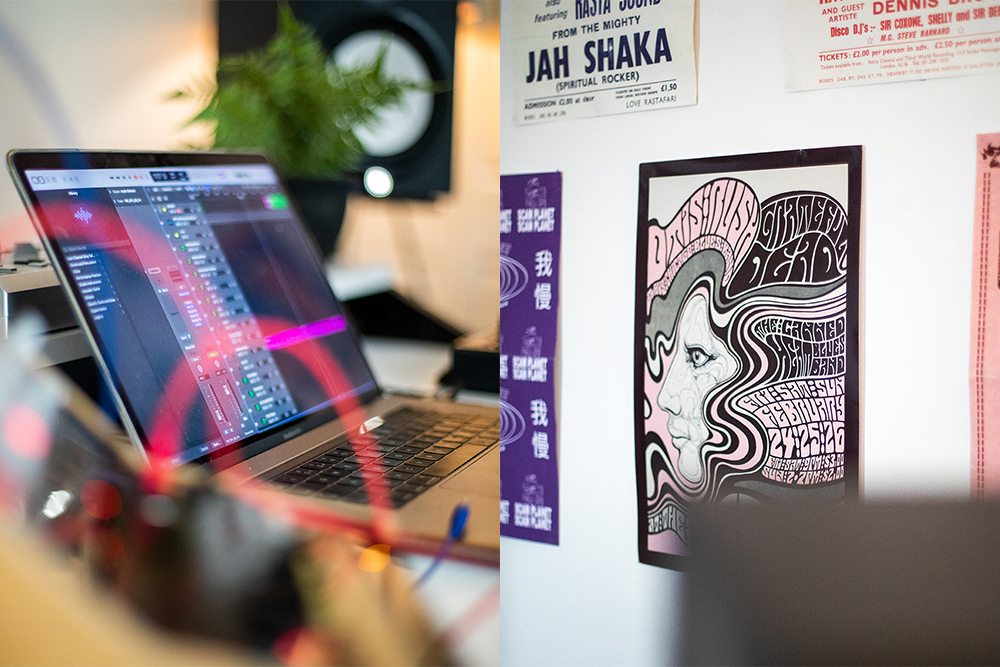
A story about Bior Elliott could be told through the unfinished books he’s written. Although now recognised as an art director and designer, his first creative explorations came through writing words on a page. Before long, those musings became lyrics in a song, and Bior was making music with his friends as part of a collective. Without a doubt, some artists focus solely on what happens within the four walls of a booth, but for Bior, he always had an obsession with how his collective was branded, ensuring that their message was being portrayed both sonically and visually.
“The reason I got into art direction is because I’m very into the idea of controlling every aspect of any creative project,” says Bior. Though branding his own collective was his first introduction to art direction, it set him in good stead for further down the line — even after his days as a musician came to an end and he began to assume roles within multiple creative industries.
Driven by the boundlessness of his never-ending curiosity, Bior sits between ad land and the fashion world, somewhat following the steps of some of those multi-disciplinary creatives he looks up to — Ferdinando Verderi, Terry Jones to name a few — who have done the same. Although straddling the two industries was never an intentional move from Bior, it’s just the way the cookie crumbled, allowing him to specialise in two different spaces. “They’re not too far away from each other, at the end of the day, you’re exploring ideas, making campaigns. I didn’t expect to be embraced by the fashion industry straight away, but it’s been a back and forth, and I want to keep moving back and forth,” says Bior.

With a journey that’s taken many unpredictable turns so far, there are a few things that Bior credits for informing his identity, grounding his work in a series of questioning. “[Being a black Brit] What does that look like, in terms of the future?” Bior asks, explaining that his upbringing within London as a black man informs every aspect of his work. Being raised in a Catholic household, even though he is now “somewhat the opposite” shapes his work, the same way an unfinished Philosophy degree does. Whilst he might not have graduated in Philosophy, some learnings and concepts have transcended the two years spent studying Psychology, now permanent parts of his methodologies and approaches. “My brand, s_.ein, is named after a concept I learnt while studying Philosophy, it means ‘being’, it pursues the idea of a thing thinking about itself,” says Bior
Thus, to define s_.ein would be a disservice. As a concept that is constantly in the act of ‘being’, it is also constantly evolving, becoming many different things. Initially starting as his final project for university, the initial idea, as Bior puts it, was “to philosophically pick apart what a brand is, in particular a clothing brand.” Beginning as an analysis that consisted of diagrams and brand guidelines, the goal was then to make a brand out of it, in a “weird circular process”. Whilst getting into full-time work after university put s_.ein on the back burner, he’d constantly find himself returning to it, exploring “different ways I [he] can express that brand.” It’s already taken multiple formats, which Bior declares was “always the goal, if I put different outputs through this brand identity, it’s seeing what comes out”. We’ve seen s_.ein not only as a clothing brand now, Bior has directed a music video and is working on a zine, and most recently released an art piece, which is on show at 180 Strand, through the lens of s_.ein.
“Design is very subjective. You make something that some people will think is amazing. And some people will think it’s sh*t. It’s important not to take things personally.” Bior is continually interrogating the way design and art are interpreted in the ad world, making things that question the norms of what is considered ‘advertising’. In the same way that Maison Margiela expertly does, and the Truman Show is known for communicating, Bior’s aims all stem from the “questioning of media and reality — it’s like looking in the mirror.”

His latest art installation at 180 Strand is a perfect example of this. Aware of the gravitas that the space holds, it’d be easy to create work that’s a visual spectacle, considered “good” by the masses. But not Bior. His piece, entitled ‘targeted_ad.s_.ein’ is a commentary on the activities and concepts of branding, and is, as Bior simply puts it, “a physical version of targeted advertising”. Sitting amongst some large and eye-catching pieces, it’s a thought-provoking installation that is a culmination of the ongoings within Bior’s head. Speaking more generally on the piece and his work in general, Bior admits: “I’ve weirdly never had much of an interest in just making something good. I want something that is both good but also questions why it is good at the same time.” With the piece (which ends up as three separate pieces) being visualisations of graphics that Bior just got onto paper, his friend, Jamie Shilvock, rendered them.
The next step was to screen print the designs onto fabric and hang them side by side. But the experience doesn’t end there. Sat just in front of the three pieces is a plinth with a stamp sat atop and a simple instruction written on the plinth: “Please use the stamp once to mark your favourite artwork.” Now covered in multiple stamps, Bior aims to individually count the number of stamps on each of the pieces and use that to determine how they’re priced relative to one another, with the most ‘popular’ piece (the one with the most stamps) being sold at the highest price.
In another interesting curveball, the plinth the stamp sits on is also decorated with a plethora of markings, meaning it might end up being the “favourite artwork.” Unpredictable for sure, but once again, upon reflection, it makes sense to Bior, he likens it to his understanding of human interaction with products and brands. “Take the iPhone, it is simply the container for everything, it’s what we view everything through, but at the same time people have a huge reverence for Apple as a design product aesthetically,” a further reinforcement of Bior’s consideration of this piece being a commentary on targeting advertising.
Creating an ecosystem where the audience is in charge of the value associated with the art is an interesting dynamic. But when you place power in the hands of an unpredictable audience, you’ll likely get unpredictable results. So as you walk through the exhibition space, you can see the s_ein branded stamp, solely intended to be stamped onto Bior’s art pieces, stamped on pieces by other artists, who they considered their favourite. “It’s a weird thing when things go viral, you don’t really have any control over it,” says Bior.
If you haven’t already, check out Bior’s work at 180 Strand as part of New School’s debut exhibition, ‘MAJOR’, until November 6 2022.

Photography – @armand.dasilva
Printing – @rhysbawilliams
Words – @igweldn
Editor – @elliefmuir
Styling – @romamitchell
Design – @andycarnegiebrown
Production – @pifivy
Special thanks – @180.studios
The Nike Air Zoom Alphafly NEXT% has been around now for a couple years and is often on most podiums are any race around the globe. Looking to push the boundaries even further, Nike Running have unveiled its newer, even more brightly coloured younger brother, the Alphafly NEXT% 2.
With the same ultra reactive cushioning underfoot, the recipe is much the same as the previous iteration however with an updated midsole and outsole that provides more stability and durability. The stack height is still a monster with even more ZoomX foam than ever with it’s carbon plate built within that provides the spring needed to smash those PB’s.
To finish things off and in perfect time for Halloween, the Alphafly NEXT% 2 comes in an eye-catching burst of ‘Total Orange’. Check it out online here!





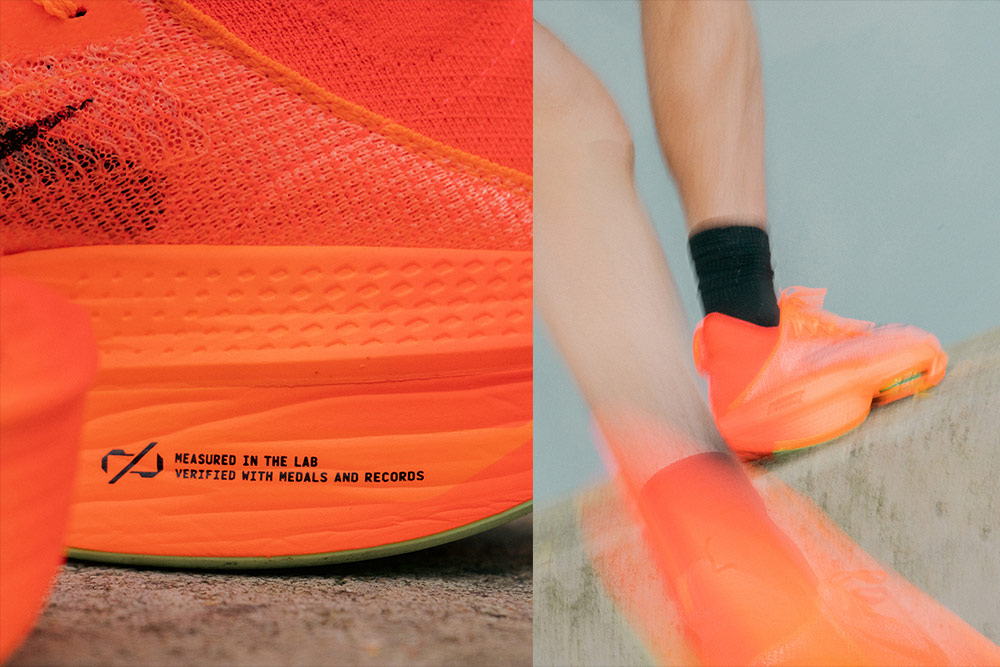

For Jordan’s ‘Black Future Season’, Footpatrol, Jordan and Gauchoworld have teamed up to tell the stories of four Black individuals from the world of music, fashion, art and food. Our penultimate feature is Emmanuelle Loca, who’s traversed through London’s creative industry, unapologetically pursuing her interests. We caught up with Manu to discuss her creative journey that’s taken her to a multitude of places: Martinique, Ghana and everywhere in between.

Meet Emmanuelle Loca, or Manu as she usually goes by, who’s navigating the creative industry as she sees fit. A multi-hyphenate director — creative, art, film, movement — her journey is one of exploration, self discovery and building connections, leading her to be a valuable contributor to increasing the profile of women within movement direction in fashion.
Falling into the industry through a behind-the-camera stint that surprisingly began before her modelling days she’s known for, Manu began assisting her best friend’s mother, an art director. Due to her lifelong interest in cinema and art direction in general, she felt at home on sets, and whilst she was still trying to figure out what aspects of the job she loved, she knew this was the space she belonged in. Till this day, it’s formed a unique role that is all-encompassing of her interests. “I’ve never liked being in a box. If I like something, I’ll try it and see where it leads me,” says Manu.
Constant trial, that Manu sometimes admits sometimes ends in error (but more importantly learning), led her to a shoot that made her consider another angle to her creative pursuits — the one she is currently flourishing in. “I’m very big on being inspired by my homies. There’s not one friend I have that doesn’t inspire me,” says Manu. After being invited down to offer her expertise on a shoot, she met movement director Yagamoto. They worked together closely, agreeing they should work together again in the near future. And so they did, collaborating on many shoots, creating opportunities for her to be seen as a capable solo movement director, too.
When working with the likes of the established Yagamoto, she’s aware she’s overlooked as a woman working behind the scenes of the fashion industry — it’s still a battle she occasionally has to fight. Rather than dwell on the negative, Manu approaches the situation positively, surrounding herself with those who share a mutual understanding with her. “I just make sure I build relationships with people who value the work and value my work,” says Manu.

And she’s not short of respectful collaborators. For every director that’s overlooked her, there’s a director like Gabriel Moses, who places utmost trust in her wealth of both research and experience. For every “what even is your role” comment, there’s a “Manu, you do you” that pushes her to continue being her most authentic self on every set. Naturally a more reserved character, she’s also continually challenging herself to project and ensure her voice is heard. “The more jobs I do, the more people and sets I experience, I’m getting better at it,” says Manu.
In addition to ensuring her voice is heard, she feels a massive part of her role is to empower models, as she’s “been there” herself, so she knows “how they feel”. An unquestionably empathetic being, Manu believes part of her job is to give models licence to express themselves, the same way a set designer, a stylist, a director is encouraged to. “It’s about giving models freedom, allowing them to be more than just a mannequin,” says Manu, which is something that translates into the way she works with the less traditional ‘model’, giving anybody who finds themselves in front of the camera the freedom to be fearless when they step into the limelight.

Especially apparent on one of her favourite projects to date, she was the movement director behind Gabriel Moses’ shoot featuring black cowboys. Her fascination with black cowboys was complemented by her background in visual research and cinema. Due to there being a multitude of live reptiles on set, they [the cowboys] hadn’t seen them before so were a little tentative. So, as Manu always does, she took the cowboys to the side, had a general conversation and placed the reptiles on herself to make them comfortable around the animals. By the end of the day they were not only enjoying themselves on set, but they also “wouldn’t leave the reptiles alone,” says Manu. “Movement works in the same way, you’re easing into someone’s character. It’s important to challenge them but make them comfortable in what they’re doing.”
Manu is excited for her future within the world of movement, but never will put her first love, cinema, completely on the back burner. As such a humble character, who is able to amalgamate disparate ideas from all the different individuals on set, she describes her wider role as more than what can be defined by a job title: “There’s so many people to please on a set. As a movement director, I help to build that bridge.”
That bridge is ever expanding, we’re excited to see the forthcoming projects Manu will share, one of which includes a self-directed film.

Photography – @armand.dasilva
Printing – @rhysbawilliams
Words – @igweldn
Editor – @elliefmuir
Styling – @rachel.parisa
Design – @andycarnegiebrown
Production – @pifivy
Hair & Make Up – @anushasolanki
